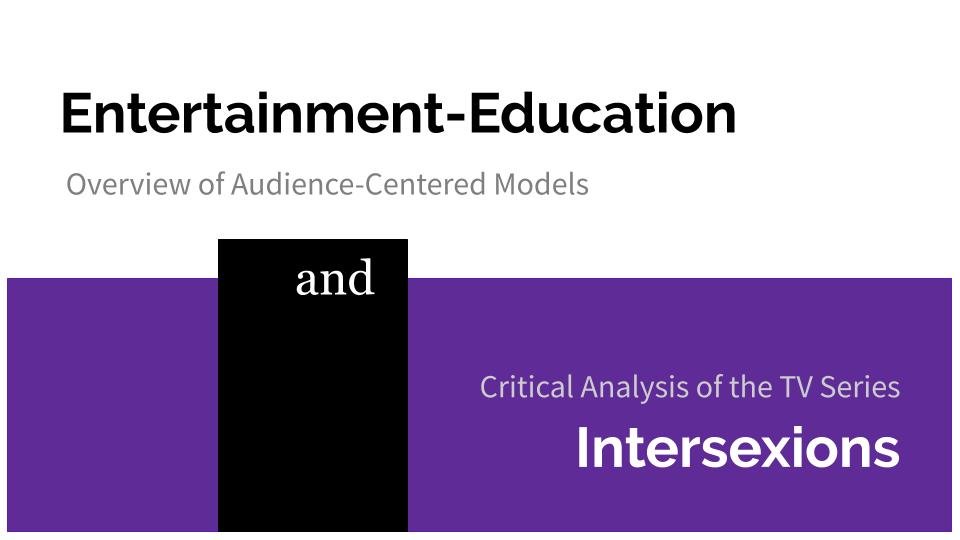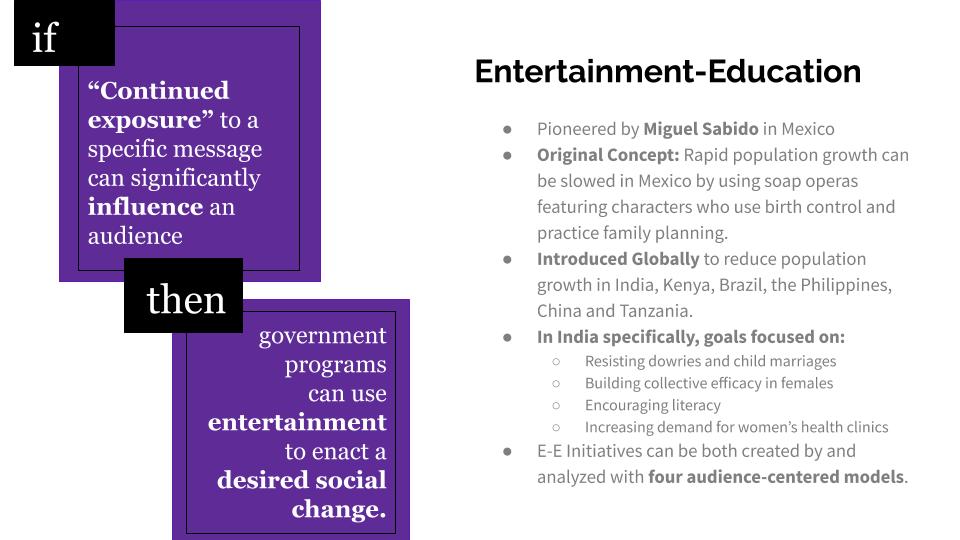Entertainment-Education Overview of Audience-Centered Models and Critical Analysis of the TV series Intersexions
Miguel Sabido, a Mexican television and radio producer, first developed a theoretical framework for what is now known worldwide as Entertainment-Education. Entertainment-Education is a communications strategy and model for developing and broadcasting entertainment programs that spur social change. The method has been used in a variety of countries to improve public health, from improving adult literacy in India to curbing the spread of HIV in South Africa. Entertainment-Education television and radio shows are most effective when tailored to a homogenous regional audience. There are four audience-centered models that both provide a framework for new initiatives and can be used to analyze ongoing programs.
The South African television drama, Intersexions, is an Entertainment-Education model used to relay information about the spread and treatment of HIV. A four-part analysis, using the aforementioned audience-centered models, suggests that the program’s award-winning first season, while successful, lacked the interpersonal communication and parasocial interaction that preceding Entertainment-Education programs used. It illustrates the shift in Entertainment-Education, where social media and online discussion groups have replaced the in-person facilitation thought to be a necessity in Sabido’s early models.





